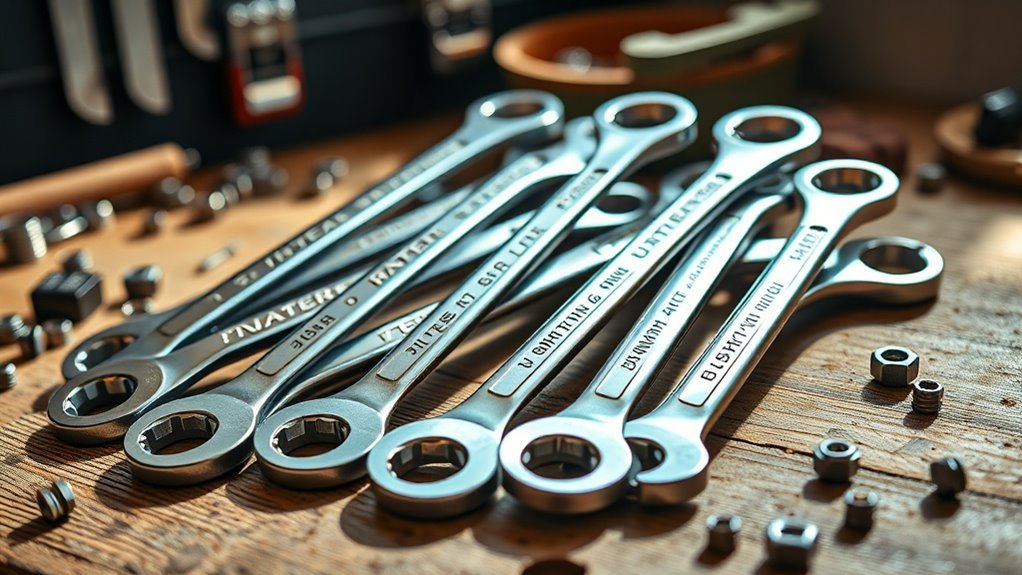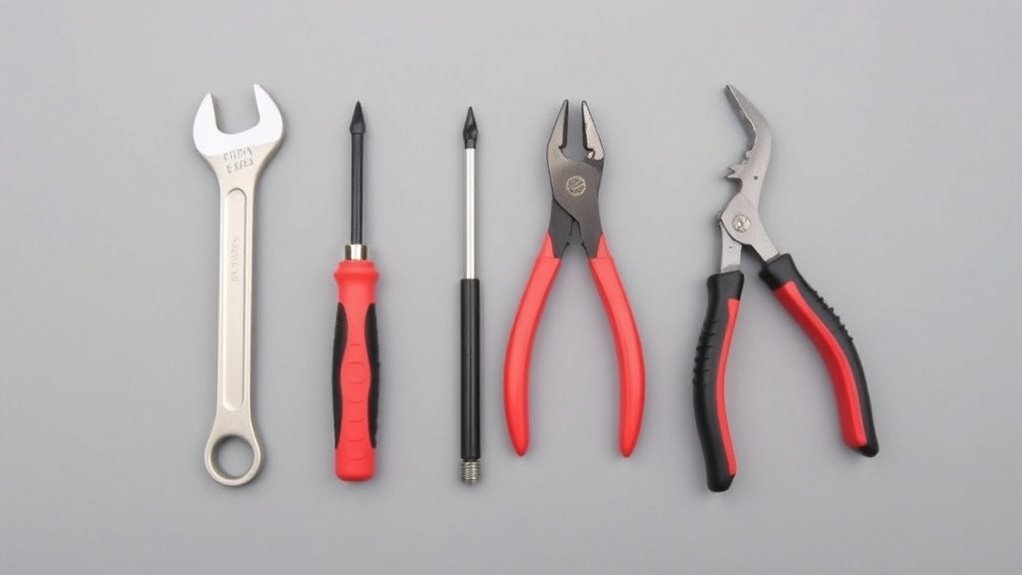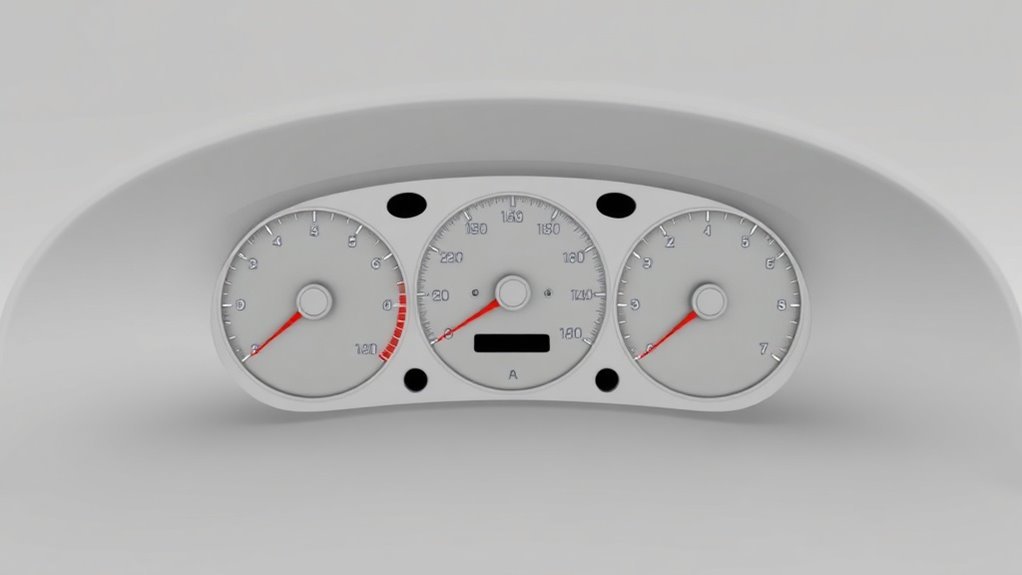Physics of Torque Wrenches in Automotive Work
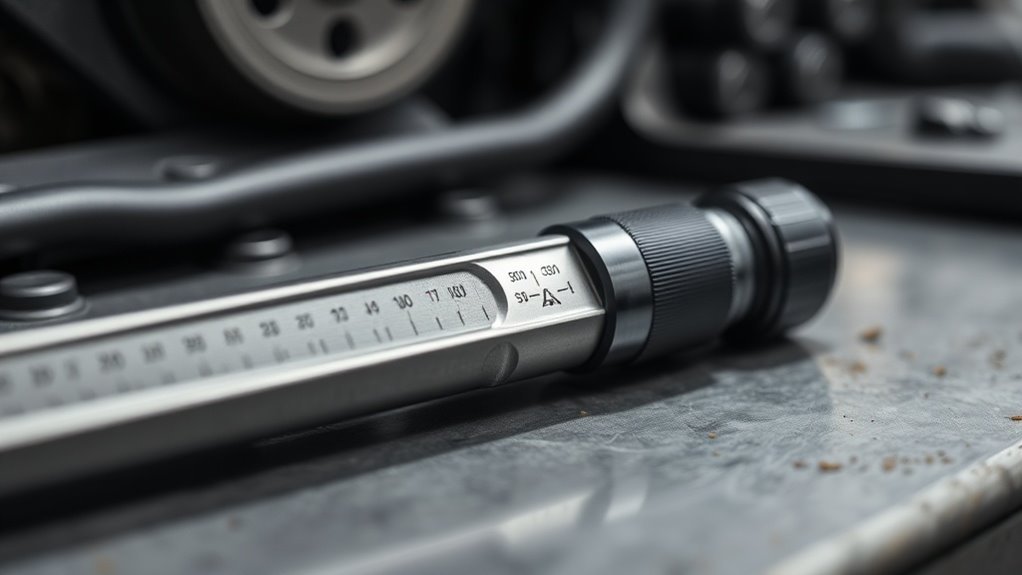
In automotive work, torque wrenches measure the rotational force you apply to fasteners. It’s vital to use the correct torque to avoid mechanical failures or damaging components. These tools come in different types, like click-type, beam, and digital, each offering unique benefits. Proper use guarantees safety and performance, while avoiding common mistakes can enhance results. If you want to discover more about how these tools can impact your projects, there’s plenty more to explore.
Key Takeaways
- Torque wrenches apply specific rotational forces, ensuring fasteners are tightened to manufacturer specifications for optimal performance in automotive work.
- Different types of torque wrenches (click, beam, digital) offer unique benefits, catering to various needs in automotive repairs.
- Proper torque application prevents mechanical failures, such as stripped threads or component damage, ensuring vehicle safety and reliability.
- Calibration of torque wrenches is crucial; inaccurate settings can lead to over-tightening or under-tightening fasteners, compromising performance.
- Consistent technique and correct angles are essential for applying torque accurately, enhancing the effectiveness of automotive maintenance tasks.
Understanding Torque: Definition and Importance
Torque is a fundamental concept in mechanics that measures the rotational force applied to an object. It’s fundamentally the product of force and the distance from the pivot point where that force is applied.
Understanding torque is vital because it directly influences how effectively you can tighten or loosen fasteners. If you underestimate the torque needed, you risk not securing parts properly, which could lead to mechanical failure. On the other hand, applying too much torque can damage components or strip threads.
Recognizing this balance helps you achieve best results in your work. Whether you’re tightening a bolt or adjusting equipment, knowing how torque works empowers you to execute tasks safely and effectively. Additionally, leveraging longer handles enhances your ability to apply sufficient torque with less effort, making tool usage more efficient.
The Mechanics of Torque Wrenches
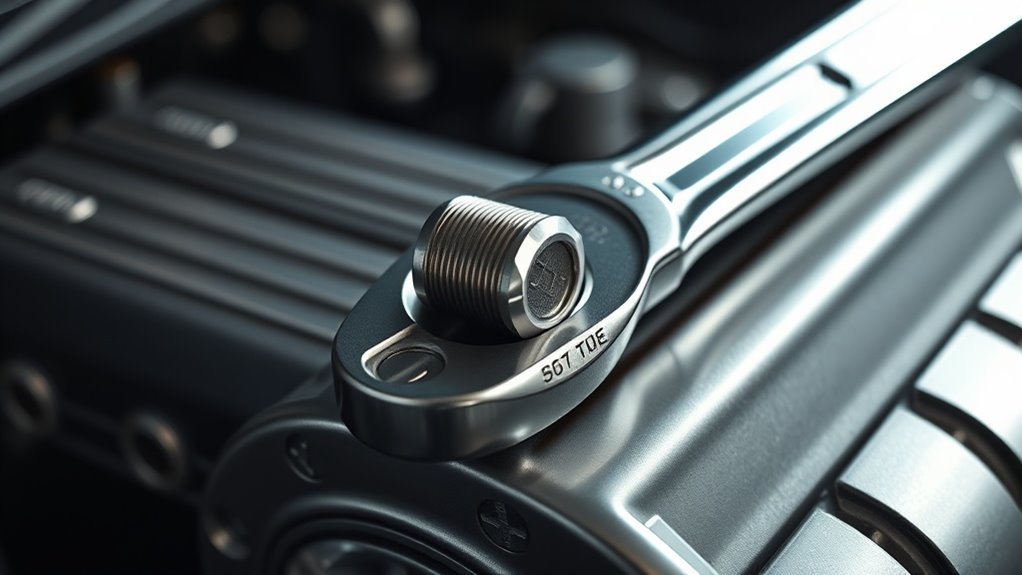
A torque wrench is an essential tool designed to apply a specific amount of rotational force to fasteners, guaranteeing they’re tightened accurately.
It operates on the principle of torque, where force is applied at a distance from a pivot point. You adjust the wrench to set your desired torque level, and as you turn the handle, it measures the force applied. When you reach the specified torque, many models emit a click or signal, letting you know to stop.
This precision prevents over-tightening, which could damage components, and guarantees your work meets safety standards. Understanding these mechanics helps you use torque wrenches effectively, enhancing your automotive projects with reliability and accuracy. By investing in high-quality precision tools, you can further reduce errors and improve overall productivity in your automotive work.
Types of Torque Wrenches: Which One to Use?
When it comes to choosing the right torque wrench, you’ve got a few options to evaluate.
Click-type, beam, and digital torque wrenches each have their unique advantages, depending on your needs.
Let’s break down what each type offers so you can make an informed decision.
Click-Type Torque Wrenches
If you’re looking for precision in your projects, click-type torque wrenches are an excellent choice.
These tools work by producing an audible click when the desired torque setting is reached, giving you immediate feedback. This feature helps prevent over-tightening, which can damage components or lead to safety issues.
Click-types are easy to use and typically offer a wide range of torque settings, making them versatile for various applications. They usually have a sturdy design, which enhances their durability and reliability in tough environments.
Remember to calibrate your wrench regularly to maintain accuracy.
Beam Torque Wrenches
Though they may lack the advanced technology of click-type wrenches, beam torque wrenches offer straightforward functionality that many users appreciate.
These wrenches utilize a simple mechanical design, featuring a beam with a scale that allows you to visually gauge the applied torque. As you turn the wrench, a pointer moves along the scale, giving you immediate feedback on the torque being applied.
This simplicity can be appealing, especially for those who prefer a more tactile approach. Just remember to pay close attention to the scale as you work, ensuring you achieve the desired torque without missing it.
Beam torque wrenches are often more affordable, making them a great choice for both novices and experienced mechanics alike.
Digital Torque Wrenches
Digital torque wrenches, which are increasingly popular in both professional and DIY settings, offer a high level of accuracy and ease of use.
These tools typically feature a clear digital display that shows precise torque measurements, making it easy to apply the correct force. Many come with preset torque settings, so you can just select your desired torque and forget about manual calculations.
Plus, they often beep or flash when you achieve the set torque, reducing the risk of over-tightening. While they’re usually more expensive than beam or click wrenches, their convenience and accuracy often make them worth the investment, especially for precision-critical automotive work.
Just remember to calibrate them periodically to maintain accuracy!
How to Properly Use a Torque Wrench
When you’re ready to use a torque wrench, understanding the proper technique is vital for achieving accurate results.
First, confirm you’ve set the wrench to the correct torque specification. As you grip the handle, position yourself so you have a firm stance and can apply steady pressure.
Start turning the wrench slowly and evenly, allowing it to click or signal when the desired torque is reached. It’s essential to use the correct angle, usually perpendicular to the fastener, to prevent miscalibration.
Always double-check your readings by re-torquing if needed, and store the wrench at its lowest setting when not in use.
Following these steps will help guarantee precision and prolong the life of your torque wrench.
Common Mistakes in Torque Application
Many people overlook the importance of calibration, which can lead to common mistakes in torque application. If your wrench isn’t properly calibrated, you might either over-torque or under-torque fasteners, causing serious issues down the line.
Another frequent mistake is using the wrong torque specification for the material or fastener type, which can result in stripped threads or inability to secure parts effectively. Additionally, many forget to apply consistent pressure while using the wrench. Jerking or pulling too hard can skew results.
Finally, not holding the wrench perpendicular to the fastener can affect accuracy. By avoiding these pitfalls, you can guarantee better performance and longevity for your vehicle components.
The Impact of Proper Torque on Vehicle Safety and Performance
Although it may seem minor, proper torque application is essential for ensuring both vehicle safety and performance. When you tighten bolts and fasteners to the correct specifications, you greatly reduce the risk of mechanical failures.
Under-torqued components can lead to loosened parts, causing serious accidents and impairing your vehicle’s control. On the other hand, over-torquing can strip threads or crack components, creating additional safety hazards.
Improper torque can loosen parts or damage components, leading to serious safety risks on the road.
By adhering to manufacturer guidelines, you maintain essential connections like wheel lugs or suspension parts, which directly impact handling and stability. Investing time in using a torque wrench not only enhances vehicle longevity but also safeguards everyone on the road.
Extreme temperatures can also affect tool performance, making it crucial to consider how weather impacts tools when working on your vehicle. Trusting proper torque can make the difference between a fleeting drive and a safe journey.
Questions
Can Regular Torque Wrench Calibration Improve Accuracy Over Time?
Yes, regular torque wrench calibration can improve accuracy over time. By ensuring proper functioning and correcting any deviations, you’ll maintain precision in your work, resulting in better performance and longevity of your tools.
What Materials Are Commonly Used in Torque Wrench Construction?
Torque wrenches are commonly made from steel, aluminum, and plastic. Steel offers durability, aluminum provides lightweight construction, and plastic components often help with grip. Each material contributes to the wrench’s overall performance and longevity.
How Often Should a Torque Wrench Be Serviced?
You should service your torque wrench every 1 to 2 years, depending on usage. Regularly calibrating, checking for accuracy, and inspecting for wear guarantees consistent performance, prolongs its lifespan, and maintains reliable results in your projects.
Are Digital Torque Wrenches More Reliable Than Mechanical Ones?
Digital torque wrenches can be more reliable than mechanical ones since they often provide precise readings and easier adjustments. However, reliability also depends on calibration and proper maintenance, so keep yours properly serviced for best results.
Can Temperature Affect Torque Wrench Performance?
Yes, temperature can affect torque wrench performance. Extreme heat or cold might change the tool’s calibration, leading to inaccurate readings. It’s important to avoid using them in extreme temperature conditions for reliable results.
Conclusion
In the world of automotive work, treating torque like a recipe is essential—too much or too little can ruin the dish. Proper torque applications aren’t just about numbers; they guarantee your vehicle runs safely and efficiently. By understanding the mechanics and using the right tools, you can avoid common pitfalls. So, keep those torque wrenches handy, and remember, just like with cooking, precision makes all the difference in the outcome.


